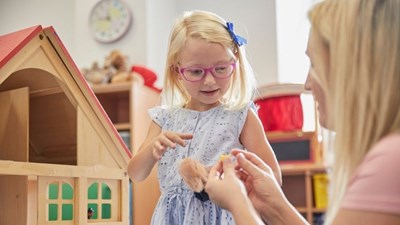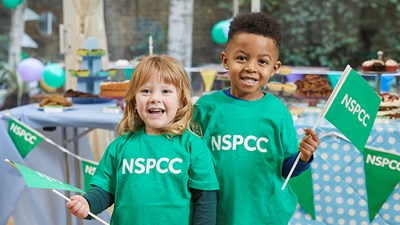We know that when children feel listened to and know where to go for help and support it can make it easier if they feel worried or unsafe right now or at some point in the future. You could make one for yourself too.
What you’ll need:
A box. You could choose to decorate the box with wrapping paper or paint.
Start by talking about why you’re making a wellbeing box together.
Find a quiet time and explain that the wellbeing box is to collect all the things that can help a person when things are difficult.
Ask your child to think about what helps them, who they can talk to if they need support and what kind of things make them feel better. Let your child guide you so that they can decide what works for them.
If you’re making one too – feel free to share about what you’re going to put in yours and why.
Fill your box with reminders of things that make them feel safe and happy.
This could be:
- objects or photos to remind your child of their trusted adults
- something that reminds them of places they felt happy and safe - a keepsake from a trip, a pebble from a beach for example
- messages/cards from friends and family to your child
- song lyrics or poetry that they like.
- their favourite small teddy or toy
- playlist of upbeat songs
- items that help them feel calmer - a feather to calm breathing, a glitter ball, squeeze ball, a smooth stone
- notepad to write down things to share.
Help kids learn and remember that:
- Every child has the right to speak out and stay safe.
- Making a child feel sad, scared or worried is never OK and is never their fault.
- If they're ever worried they know who to talk to, so they can get help.
- Whatever their worry, they can always call Childline on 0800 1111 or visit childline.org.uk/kids.
Giving children a chance to learn through a playful and hands-on experience helps them make sense of these important staying safe messages and remember them.
Collecting meaningful items and putting them in a wellbeing box helps your children talk about what’s important to them, and how they feel. They can add to the box whenever they like – and open it whenever they need. The box and its contents will always be there as a reminder of what they chose, how they felt, and ways to get support.
Creating a box together is also a great opportunity to ask questions and start conversations about safety – so your children understand that their trusted adult is there for them whatever they want to talk about.
Can you spare 5 minutes to share what you thought about your activities? Your feedback will help us develop new activities.
Want to try this out another time?
Sign up to get the links to our new activities by email - and we'll also let you know when we have new ones for you to try!
How to have conversations about safety with children
- Whether it’s during one of our activities or you’re simply talking with your child – allow them space to speak and explore.
- Ask open questions about how they feel. You could ask:
- How did you feel during this activity?
- What did you think of the activity? Why?
- What part of the activity do you think is the most important?
- Which adults do you trust and feel comfortable talking about your worries with?
- What could you do if you’re worried about something?
- Feel free to share your own thoughts with them too – this can help them feel more comfortable sharing.
- Make sure your child knows you’re listening and that you’re there for them.
- Ensure you respond appropriately if a child tells you they’ve been hurt.
Resources and support for parents, carers and kids
Childline is always here for children – whatever their worry. Your child can always contact a Childline counsellor on the phone, online with 1-2-1 chat or by email. The Childline website has lots of useful, age-appropriate resources they can use for support:
- Find out about contacting Childline - or watch our video about what happens when you call.
- There are also lots of ways for deaf, Deaf and hard of hearing children can get support from Childline.
- Get advice written specially for Under 12s about anything that might be worrying them.
- Visit our Buddy Zone for more safety advice.
- Playing Childline’s games is a safe way to relax and play online.
- Bust stress and feel calmer with Childline’s Build your happy place.
We have lots of advice for parents and carers to help with anything that might be worrying you. You can also call our helpline if you have any questions or need any support.
- Get useful resources and advice about a range of topics from our support for parents hub.
- Join the 1.5 million parents who have started important conversations about sexual abuse with their kids using Talk PANTS, the Underwear Rule.
- Read all about positive parenting and how it can help your kids in our guide.
- Visit our Online Safety Hub for advice and information on a range of different online safety topics, including gaming, social media, sharing nudes, parental controles and more.
Why learning to speak out is important
In the average primary school class, at least 2 children have suffered abuse or neglect.
1 in 3 children sexually abused by an adult did not tell anyone what had happened to them.
On average, a child contacts Childline every 25 seconds. We're here when no one else is listening.
Sign up for more activities to try!
We know it can be hard to talk about difficult topics at home – but making sure your children know they can tell you, a trusted adult, or a Childline counsellor about their worries means we can be here if a child needs us.
Get all the links to all our new activities by email
- and we'll let you know when we have new ones for you to try!








